Jakub Breier
Make Shuffling Great Again: A Side-Channel Resistant Fisher-Yates Algorithm for Protecting Neural Networks
Jan 01, 2025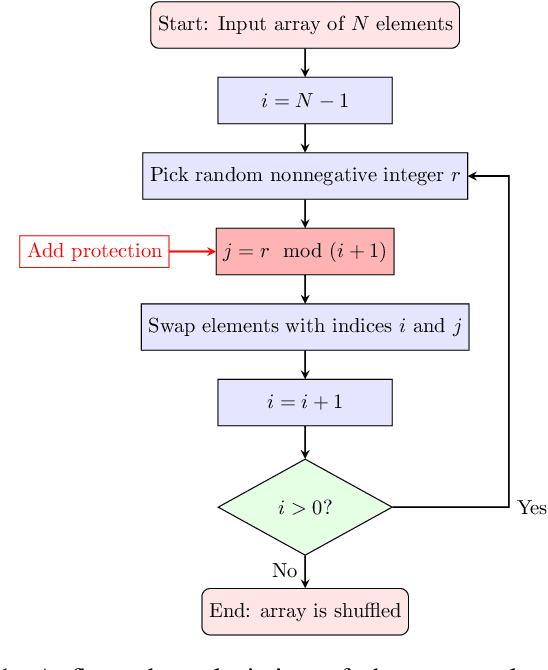
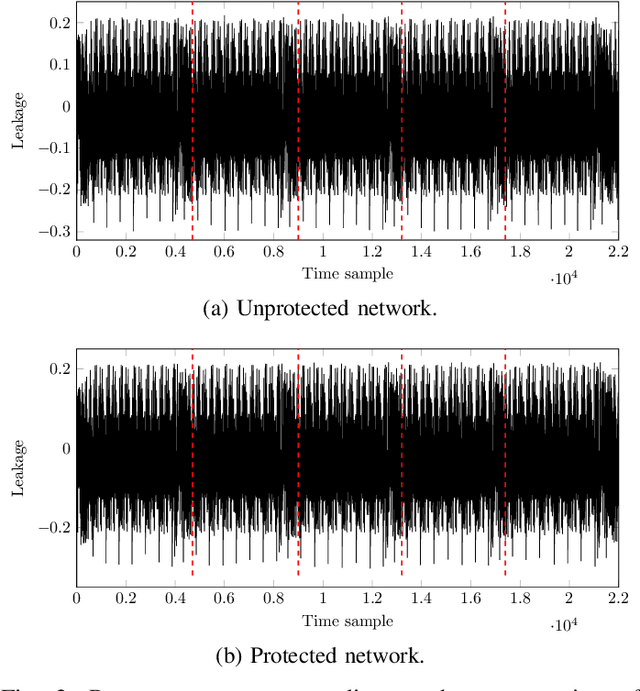
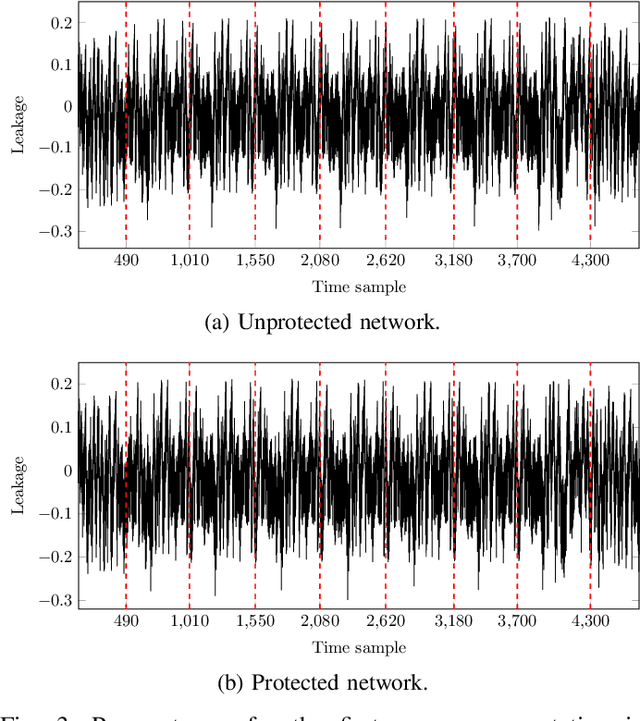
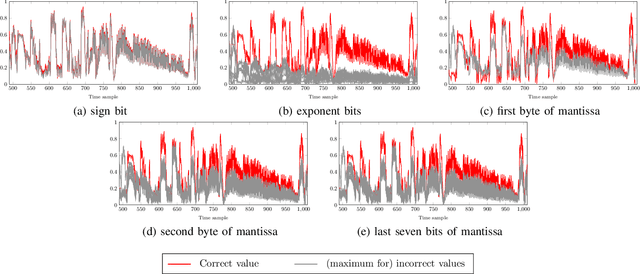
Abstract:Neural network models implemented in embedded devices have been shown to be susceptible to side-channel attacks (SCAs), allowing recovery of proprietary model parameters, such as weights and biases. There are already available countermeasure methods currently used for protecting cryptographic implementations that can be tailored to protect embedded neural network models. Shuffling, a hiding-based countermeasure that randomly shuffles the order of computations, was shown to be vulnerable to SCA when the Fisher-Yates algorithm is used. In this paper, we propose a design of an SCA-secure version of the Fisher-Yates algorithm. By integrating the masking technique for modular reduction and Blakely's method for modular multiplication, we effectively remove the vulnerability in the division operation that led to side-channel leakage in the original version of the algorithm. We experimentally evaluate that the countermeasure is effective against SCA by implementing a correlation power analysis attack on an embedded neural network model implemented on ARM Cortex-M4. Compared to the original proposal, the memory overhead is $2\times$ the biggest layer of the network, while the time overhead varies from $4\%$ to $0.49\%$ for a layer with $100$ and $1000$ neurons, respectively.
Side-Channel Analysis of OpenVINO-based Neural Network Models
Jul 23, 2024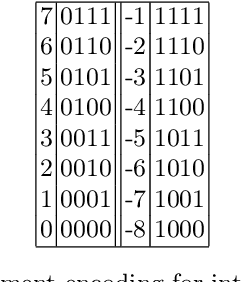
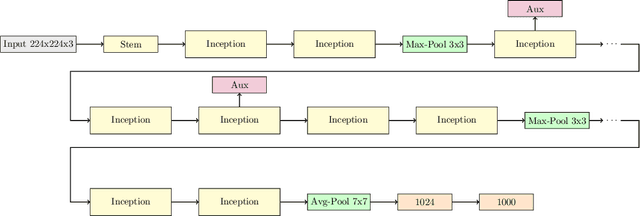

Abstract:Embedded devices with neural network accelerators offer great versatility for their users, reducing the need to use cloud-based services. At the same time, they introduce new security challenges in the area of hardware attacks, the most prominent being side-channel analysis (SCA). It was shown that SCA can recover model parameters with a high accuracy, posing a threat to entities that wish to keep their models confidential. In this paper, we explore the susceptibility of quantized models implemented in OpenVINO, an embedded framework for deploying neural networks on embedded and Edge devices. We show that it is possible to recover model parameters with high precision, allowing the recovered model to perform very close to the original one. Our experiments on GoogleNet v1 show only a 1% difference in the Top 1 and a 0.64% difference in the Top 5 accuracies.
RMF: A Risk Measurement Framework for Machine Learning Models
Jun 15, 2024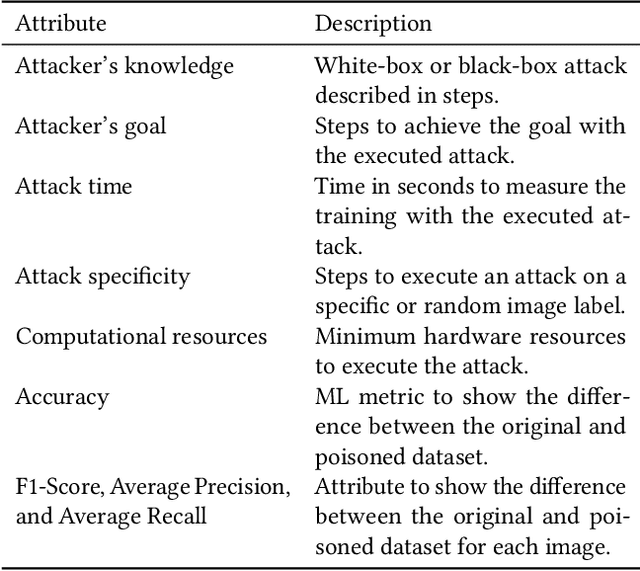
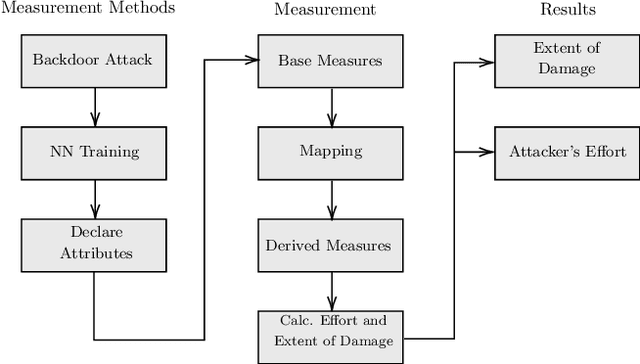
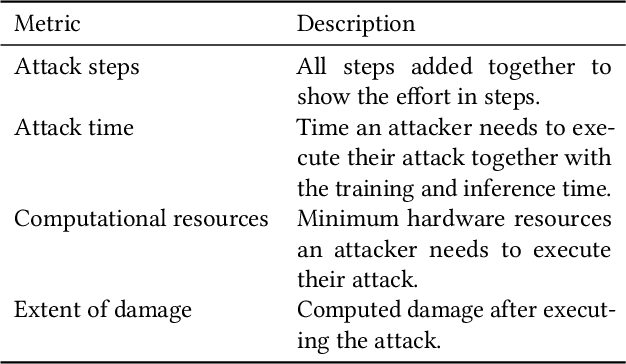
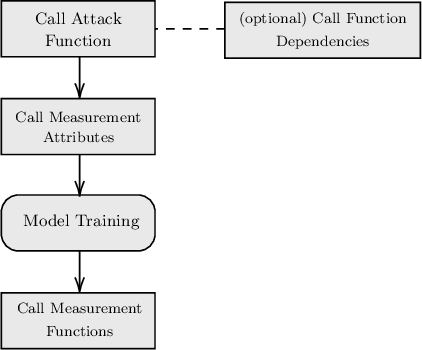
Abstract:Machine learning (ML) models are used in many safety- and security-critical applications nowadays. It is therefore important to measure the security of a system that uses ML as a component. This paper focuses on the field of ML, particularly the security of autonomous vehicles. For this purpose, a technical framework will be described, implemented, and evaluated in a case study. Based on ISO/IEC 27004:2016, risk indicators are utilized to measure and evaluate the extent of damage and the effort required by an attacker. It is not possible, however, to determine a single risk value that represents the attacker's effort. Therefore, four different values must be interpreted individually.
DeepNcode: Encoding-Based Protection against Bit-Flip Attacks on Neural Networks
May 22, 2024Abstract:Fault injection attacks are a potent threat against embedded implementations of neural network models. Several attack vectors have been proposed, such as misclassification, model extraction, and trojan/backdoor planting. Most of these attacks work by flipping bits in the memory where quantized model parameters are stored. In this paper, we introduce an encoding-based protection method against bit-flip attacks on neural networks, titled DeepNcode. We experimentally evaluate our proposal with several publicly available models and datasets, by using state-of-the-art bit-flip attacks: BFA, T-BFA, and TA-LBF. Our results show an increase in protection margin of up to $7.6\times$ for $4-$bit and $12.4\times$ for $8-$bit quantized networks. Memory overheads start at $50\%$ of the original network size, while the time overheads are negligible. Moreover, DeepNcode does not require retraining and does not change the original accuracy of the model.
A Desynchronization-Based Countermeasure Against Side-Channel Analysis of Neural Networks
Mar 25, 2023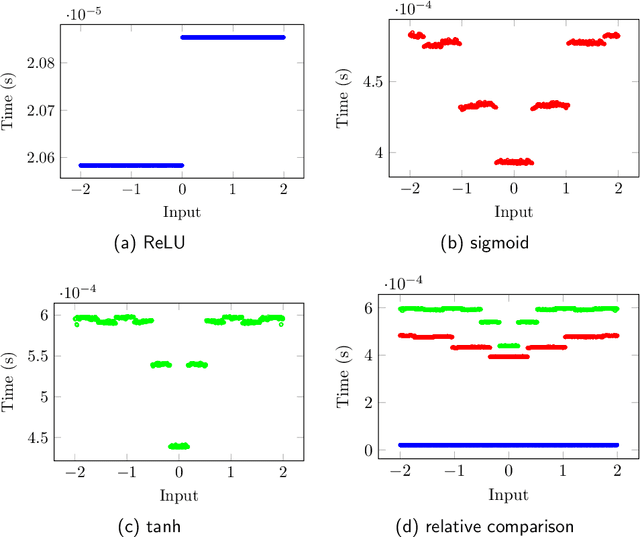

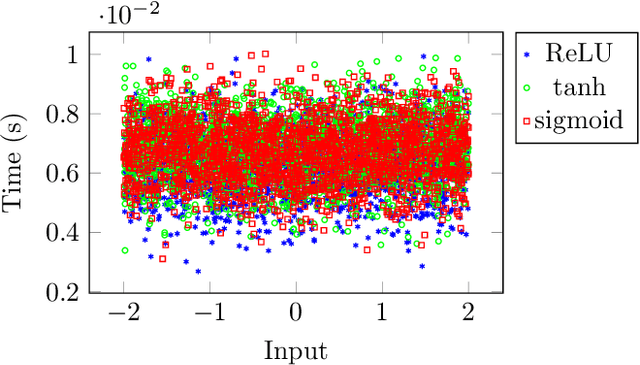

Abstract:Model extraction attacks have been widely applied, which can normally be used to recover confidential parameters of neural networks for multiple layers. Recently, side-channel analysis of neural networks allows parameter extraction even for networks with several multiple deep layers with high effectiveness. It is therefore of interest to implement a certain level of protection against these attacks. In this paper, we propose a desynchronization-based countermeasure that makes the timing analysis of activation functions harder. We analyze the timing properties of several activation functions and design the desynchronization in a way that the dependency on the input and the activation type is hidden. We experimentally verify the effectiveness of the countermeasure on a 32-bit ARM Cortex-M4 microcontroller and employ a t-test to show the side-channel information leakage. The overhead ultimately depends on the number of neurons in the fully-connected layer, for example, in the case of 4096 neurons in VGG-19, the overheads are between 2.8% and 11%.
FooBaR: Fault Fooling Backdoor Attack on Neural Network Training
Sep 23, 2021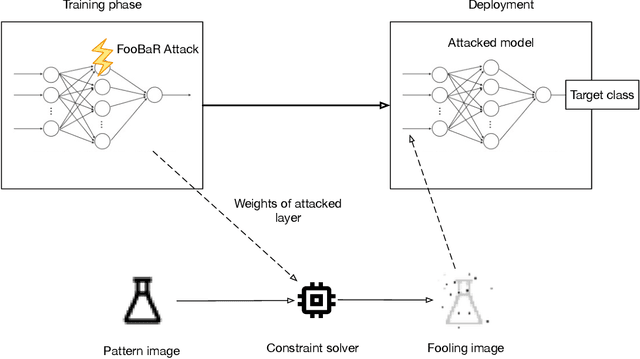

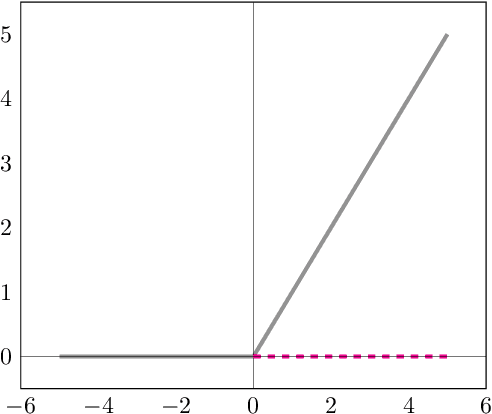
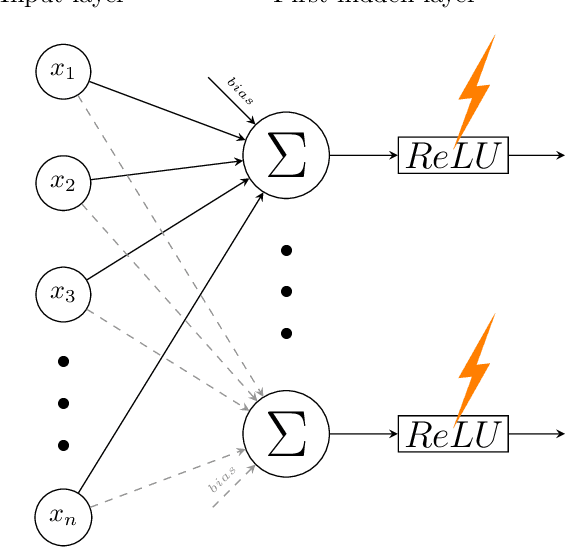
Abstract:Neural network implementations are known to be vulnerable to physical attack vectors such as fault injection attacks. As of now, these attacks were only utilized during the inference phase with the intention to cause a misclassification. In this work, we explore a novel attack paradigm by injecting faults during the training phase of a neural network in a way that the resulting network can be attacked during deployment without the necessity of further faulting. In particular, we discuss attacks against ReLU activation functions that make it possible to generate a family of malicious inputs, which are called fooling inputs, to be used at inference time to induce controlled misclassifications. Such malicious inputs are obtained by mathematically solving a system of linear equations that would cause a particular behaviour on the attacked activation functions, similar to the one induced in training through faulting. We call such attacks fooling backdoors as the fault attacks at the training phase inject backdoors into the network that allow an attacker to produce fooling inputs. We evaluate our approach against multi-layer perceptron networks and convolutional networks on a popular image classification task obtaining high attack success rates (from 60% to 100%) and high classification confidence when as little as 25 neurons are attacked while preserving high accuracy on the originally intended classification task.
Risk Management Framework for Machine Learning Security
Dec 09, 2020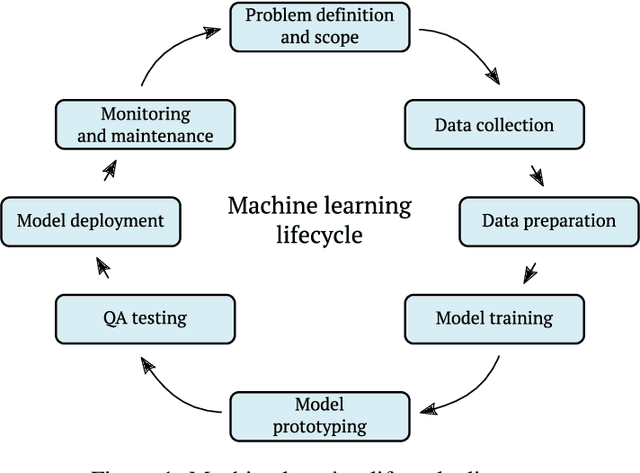
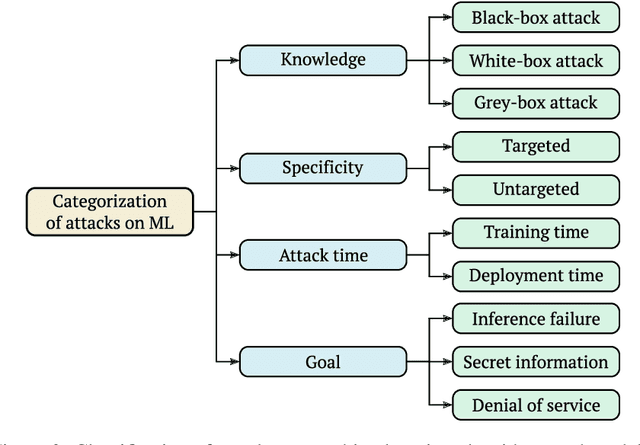
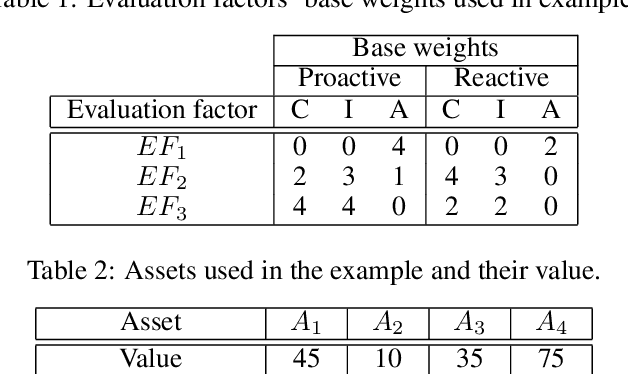
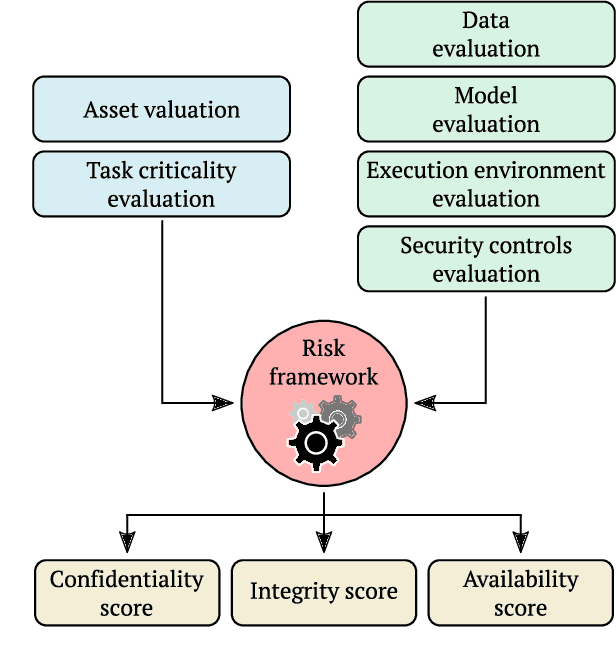
Abstract:Adversarial attacks for machine learning models have become a highly studied topic both in academia and industry. These attacks, along with traditional security threats, can compromise confidentiality, integrity, and availability of organization's assets that are dependent on the usage of machine learning models. While it is not easy to predict the types of new attacks that might be developed over time, it is possible to evaluate the risks connected to using machine learning models and design measures that help in minimizing these risks. In this paper, we outline a novel framework to guide the risk management process for organizations reliant on machine learning models. First, we define sets of evaluation factors (EFs) in the data domain, model domain, and security controls domain. We develop a method that takes the asset and task importance, sets the weights of EFs' contribution to confidentiality, integrity, and availability, and based on implementation scores of EFs, it determines the overall security state in the organization. Based on this information, it is possible to identify weak links in the implemented security measures and find out which measures might be missing completely. We believe our framework can help in addressing the security issues related to usage of machine learning models in organizations and guide them in focusing on the adequate security measures to protect their assets.
SNIFF: Reverse Engineering of Neural Networks with Fault Attacks
Feb 23, 2020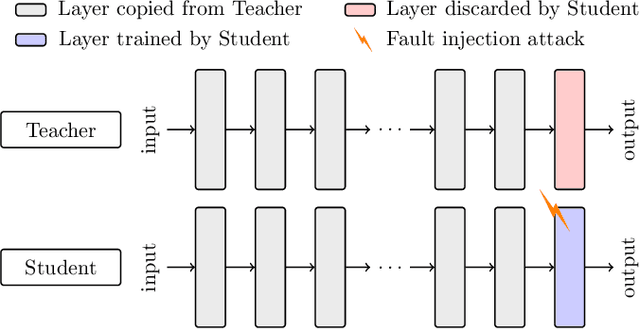
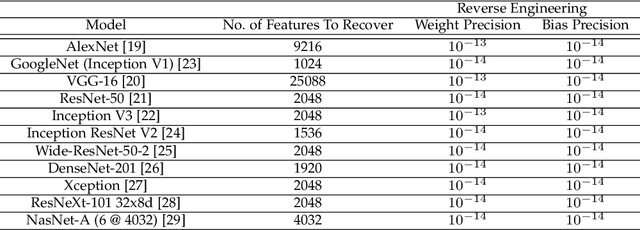
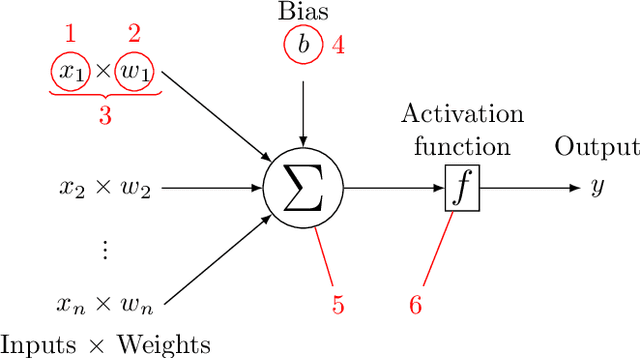

Abstract:Neural networks have been shown to be vulnerable against fault injection attacks. These attacks change the physical behavior of the device during the computation, resulting in a change of value that is currently being computed. They can be realized by various fault injection techniques, ranging from clock/voltage glitching to application of lasers to rowhammer. In this paper we explore the possibility to reverse engineer neural networks with the usage of fault attacks. SNIFF stands for sign bit flip fault, which enables the reverse engineering by changing the sign of intermediate values. We develop the first exact extraction method on deep-layer feature extractor networks that provably allows the recovery of the model parameters. Our experiments with Keras library show that the precision error for the parameter recovery for the tested networks is less than $10^{-13}$ with the usage of 64-bit floats, which improves the current state of the art by 6 orders of magnitude. Additionally, we discuss the protection techniques against fault injection attacks that can be applied to enhance the fault resistance.
Enhancing Fault Tolerance of Neural Networks for Security-Critical Applications
Feb 05, 2019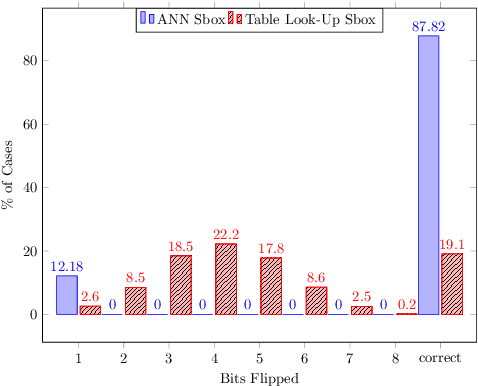
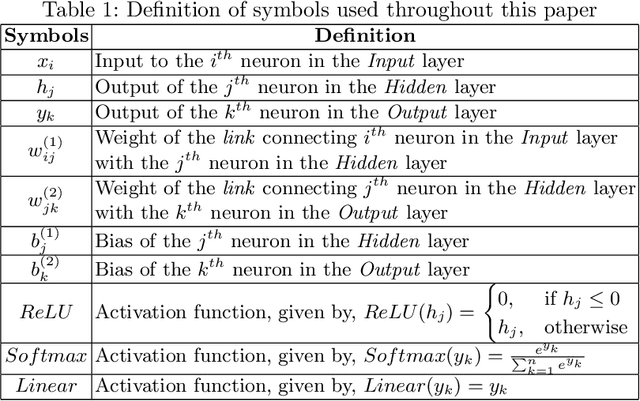
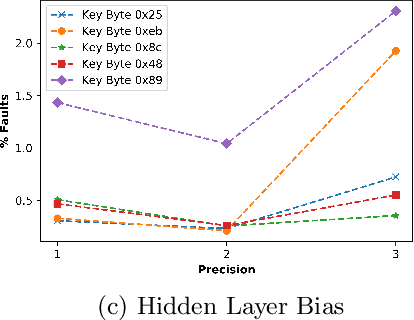
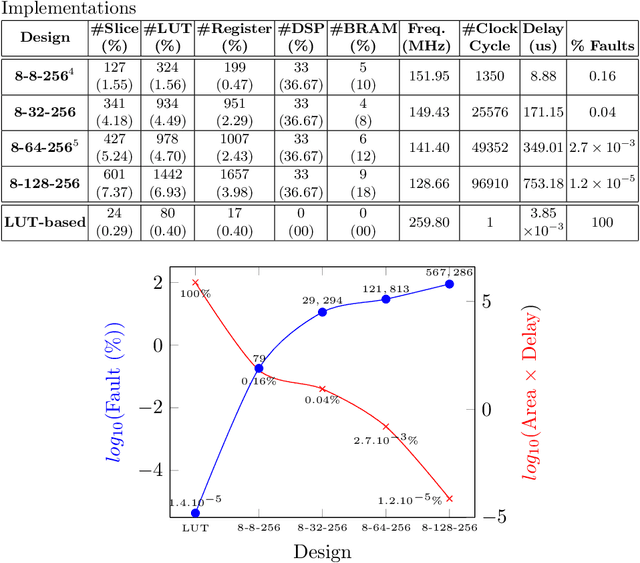
Abstract:Neural Networks (NN) have recently emerged as backbone of several sensitive applications like automobile, medical image, security, etc. NNs inherently offer Partial Fault Tolerance (PFT) in their architecture; however, the biased PFT of NNs can lead to severe consequences in applications like cryptography and security critical scenarios. In this paper, we propose a revised implementation which enhances the PFT property of NN significantly with detailed mathematical analysis. We evaluated the performance of revised NN considering both software and FPGA implementation for a cryptographic primitive like AES SBox. The results show that the PFT of NNs can be significantly increased with the proposed methodology.
DeepLaser: Practical Fault Attack on Deep Neural Networks
Sep 29, 2018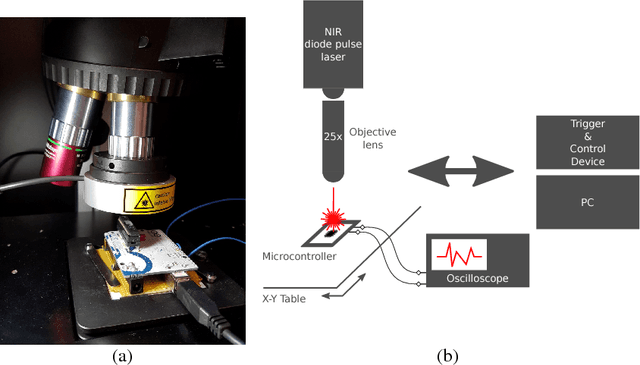

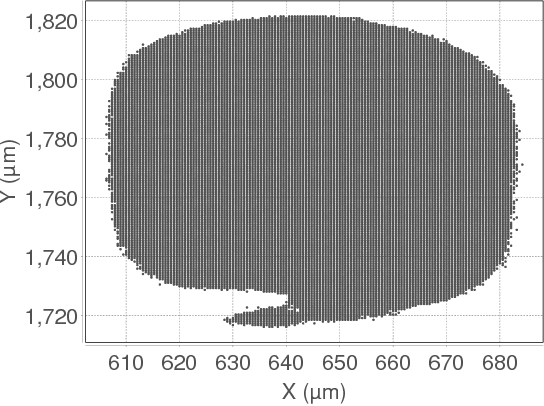
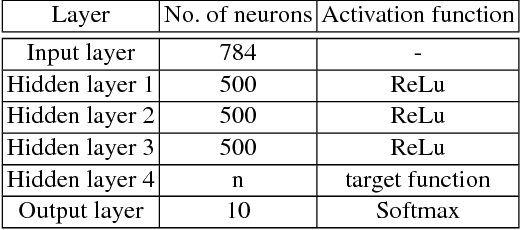
Abstract:As deep learning systems are widely adopted in safety- and security-critical applications, such as autonomous vehicles, banking systems, etc., malicious faults and attacks become a tremendous concern, which potentially could lead to catastrophic consequences. In this paper, we initiate the first study of leveraging physical fault injection attacks on Deep Neural Networks (DNNs), by using laser injection technique on embedded systems. In particular, our exploratory study targets four widely used activation functions in DNNs development, that are the general main building block of DNNs that creates non-linear behaviors -- ReLu, softmax, sigmoid, and tanh. Our results show that by targeting these functions, it is possible to achieve a misclassification by injecting faults into the hidden layer of the network. Such result can have practical implications for real-world applications, where faults can be introduced by simpler means (such as altering the supply voltage).
 Add to Chrome
Add to Chrome Add to Firefox
Add to Firefox Add to Edge
Add to Edge